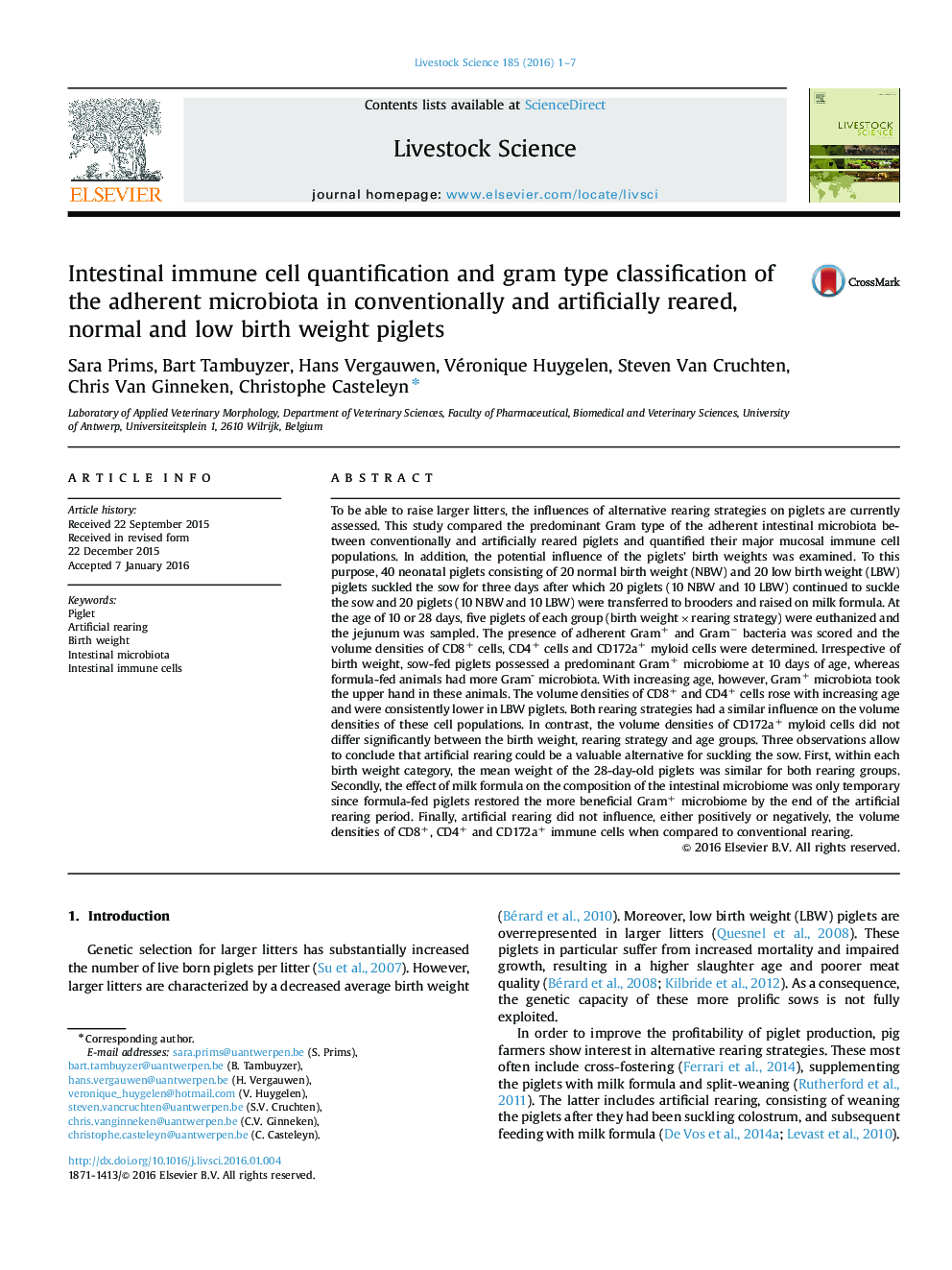| کد مقاله | کد نشریه | سال انتشار | مقاله انگلیسی | نسخه تمام متن |
|---|---|---|---|---|
| 2446940 | 1553947 | 2016 | 7 صفحه PDF | دانلود رایگان |
• Artificially reared piglets can restore their disturbed neonatal Gram+ microbiome.
• Formula does not influence volume densities of jejunal CD4+, CD8+ and CD172a+ cells.
• Low birth weight piglets have lower volume densities of jejunal CD8+ and CD4+ cells.
• Artificial rearing promotes the zootechnical results of low birth weight piglets.
• Formula feeding of large litters seems a valuable alternative for suckling the sow.
To be able to raise larger litters, the influences of alternative rearing strategies on piglets are currently assessed. This study compared the predominant Gram type of the adherent intestinal microbiota between conventionally and artificially reared piglets and quantified their major mucosal immune cell populations. In addition, the potential influence of the piglets' birth weights was examined. To this purpose, 40 neonatal piglets consisting of 20 normal birth weight (NBW) and 20 low birth weight (LBW) piglets suckled the sow for three days after which 20 piglets (10 NBW and 10 LBW) continued to suckle the sow and 20 piglets (10 NBW and 10 LBW) were transferred to brooders and raised on milk formula. At the age of 10 or 28 days, five piglets of each group (birth weight×rearing strategy) were euthanized and the jejunum was sampled. The presence of adherent Gram+ and Gram− bacteria was scored and the volume densities of CD8+ cells, CD4+ cells and CD172a+ myloid cells were determined. Irrespective of birth weight, sow-fed piglets possessed a predominant Gram+ microbiome at 10 days of age, whereas formula-fed animals had more Gram- microbiota. With increasing age, however, Gram+ microbiota took the upper hand in these animals. The volume densities of CD8+ and CD4+ cells rose with increasing age and were consistently lower in LBW piglets. Both rearing strategies had a similar influence on the volume densities of these cell populations. In contrast, the volume densities of CD172a+ myloid cells did not differ significantly between the birth weight, rearing strategy and age groups. Three observations allow to conclude that artificial rearing could be a valuable alternative for suckling the sow. First, within each birth weight category, the mean weight of the 28-day-old piglets was similar for both rearing groups. Secondly, the effect of milk formula on the composition of the intestinal microbiome was only temporary since formula-fed piglets restored the more beneficial Gram+ microbiome by the end of the artificial rearing period. Finally, artificial rearing did not influence, either positively or negatively, the volume densities of CD8+, CD4+ and CD172a+ immune cells when compared to conventional rearing.
Journal: Livestock Science - Volume 185, March 2016, Pages 1–7
